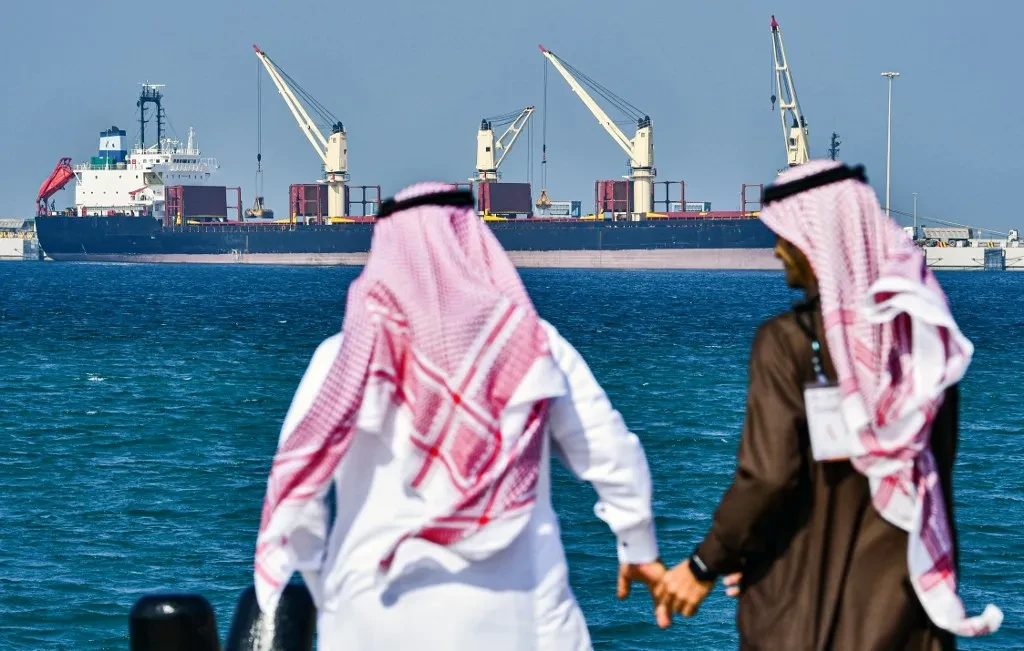Saudi Arabia weighs options amid oil price dip
 A view of Riyadh, the capital of Saudi Arabia, in 2007. (Photo: AFP)
A view of Riyadh, the capital of Saudi Arabia, in 2007. (Photo: AFP)
The recent downturn in global oil prices after President Trump’s “liberation day” announcements is prompting Saudi Arabia to reassess its fiscal roadmap, but there is no indication of an immediate economic crisis.
The shift in market dynamics and further potential trade uncertainties may widen the kingdom’s budget deficit, but many analysts claim that Saudi Arabia remains well-positioned to manage a short-term type of turbulence.
On Thursday, April 10, benchmark Brent prices were around $62.
This is a level that last year Goldman Sachs calculated the results of. According to the investment bank giant, the kingdom’s fiscal deficit could rise from an earlier forecast of $30.8 billion to between $70 billion and $75 billion in case the price sticks around today’s level.
However, analysts emphasize that Saudi Arabia still has considerable flexibility and a range of policy tools at its disposal to counter the deficit’s effects.

Spendings face temporary pressure
Announced on April 9, the limited market response to U.S. President Donald Trump’s 90-day tariff delay suggests that broader economic factors are at play and price dynamics are not easily swayed by short-term policy signals. For Saudi Arabia, this reinforces the reality that the issue is no longer momentary.
At the heart of Riyadh’s long-term strategy is Vision 2030, a multi-trillion-dollar effort to diversify the economy beyond oil. This includes signature projects such as Neom, a high-tech urban hub in the northwest desert, and preparations to host global events like the Asia Games, the 2030 World Expo, and the 2034 FIFA World Cup.
While these initiatives are capital-intensive, there is room to recalibrate timelines or phase investments if needed. Regional economists suggest that adjustments could include scaling down or temporarily pausing select elements of large-scale projects without jeopardizing the broader goals of Vision 2030.
A spokesperson for the Saudi finance ministry stated that the government is currently recalibrating and prioritizing public spending to ensure that economic momentum continues without placing excessive pressure on the system.
Debt levels remain comfortable
The country’s debt-to-gross domestic product (GDP) ratio stands at just under 30%, significantly lower than major Western economies such as the U.S. (124%) or France (110.6%). This gives Riyadh substantial room to increase borrowing if necessary.
Although a $75 billion issuance may test market capacity, Saudi Arabia is far from being overleveraged. Rather than relying solely on debt, the kingdom can also explore asset sales and spending optimization to balance its books without compromising growth, experts report.
Moreover, Saudi Arabia’s economic resilience is underpinned by solid credit ratings and a strong reserve position. The kingdom currently holds an A/A-1 rating from S&P Global Ratings (positive outlook) and an A+ rating from Fitch (stable outlook). In addition, it maintains one of the world’s highest foreign reserve levels, with over $410 billion in assets as of January 2025.
These buffers not only cushion the kingdom against temporary oil price fluctuations but also support its long-term financial credibility in global markets.

Navigating choices, not crisis
The country has also made significant progress on economic reforms aimed at improving investor confidence, de-risking the economy, and expanding non-oil revenue streams. According to S&P Global, these efforts are expected to enhance Saudi Arabia’s overall wealth and economic strength over time.
While a lower oil price environment may slow the pace of some investments, it does not alter the strategic direction. The kingdom’s commitment to diversifying its economy remains firm.
Saudi Arabia faces a moment of reassessment, and not a fiscal emergency. The discussion is no longer about survival but about selecting the most efficient mix of available options.
These may include tapping debt markets, adjusting spending on large-scale projects, or monetizing additional state assets.
With ample financial space, international credibility, and long-term planning already underway, the kingdom is well-positioned to manage current pressures. Rather than reacting hastily, Saudi Arabia is taking a measured approach—reviewing its tools and calibrating its strategy to stay on course with Vision 2030.



